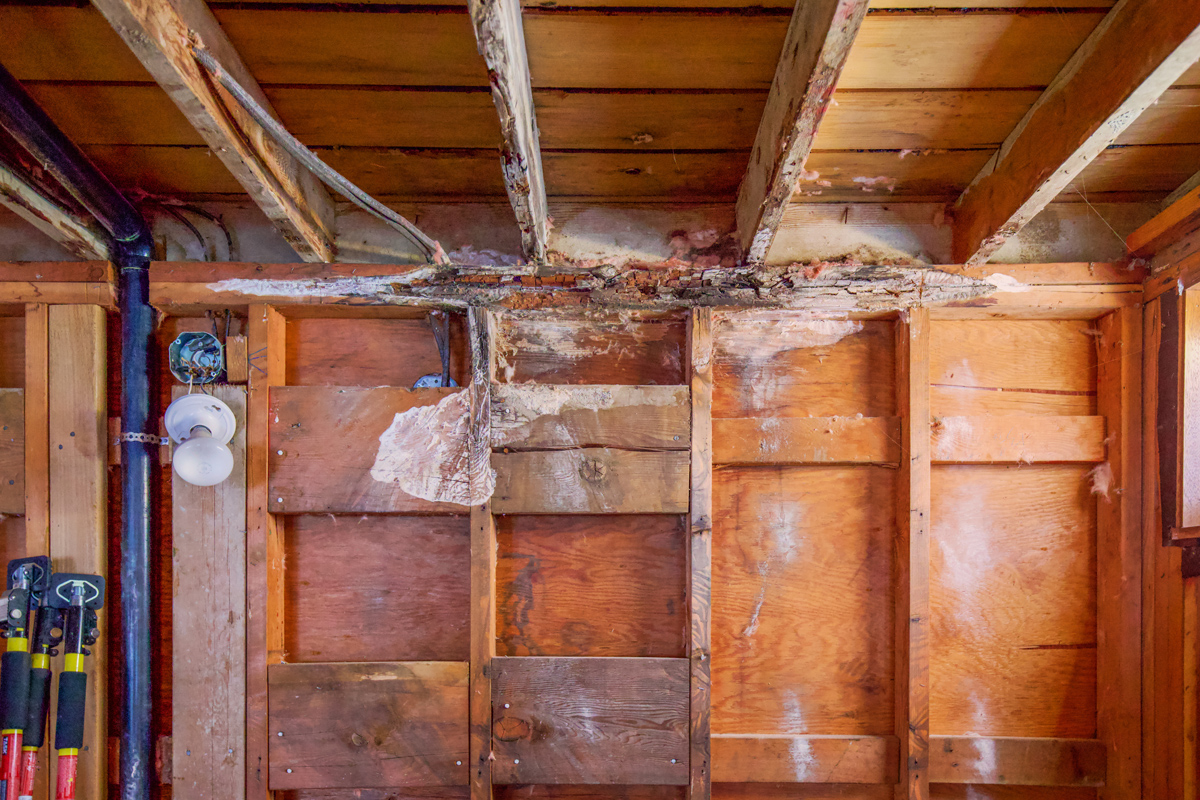
Should I Buy A House With Asbestos Siding
Many potential homebuyers may be surprised to learn how common the presence of asbestos siding is in older homes. If you are considering buying a house that contains asbestos, the best advice is to be informed before making a purchase. Learn more about asbestos siding and the associated risks right here!
What Is Asbestos Siding?
The first use of asbestos cement was seen in homes in the early 1900s. When an Australian engineer then discovered how to form the asbestos into sheets, it started to be used as siding and shingles, as well. Not long after, it was widely accepted as an alternative to wood and other roofing materials due to its fire-resistant properties. By the 1940s, asbestos siding had become extremely popular.
Just a few decades after asbestos siding had found its way into many homes and buildings, numerous health hazards started being reported. Asbestos had been shown to cause Asbestosis, lung cancer, Mesothelioma and Pleural disease. Use of asbestos for the manufacture of building products was eventually banned in the 1970s.
Fibrous cement sheets are great for housing construction use because they are more durable than drywall and easier to use than concrete. Nowadays, these sheets contain a safe plant material cellulose. Yet, for decades these were the sheets made with asbestos. That, obviously, is no longer the case.
Siding containing asbestos could be in these forms:
- Asbestos lumber: This was used in siding materials like false brick facing and shingles.
- Corrugated sheets: This is a more affordable alternative to corrugated metal panels.
What Does Asbestos Siding Look Like?
Here are a few ways to see if asbestos is present in your home:
- The siding will most often have 2-3 nail holes at the bottom of each panel.
- It feels much denser to the touch compared to modern fiber cement siding.
- The texture will seem a bit chalky.
- The siding is a 12-by-24-inch shake or shingle.
- It features a wavy pattern or wood grain pattern at the bottom.
Of course, if your home was built before 1970, you should have a professional check for asbestos.
Types Of Asbestos
Asbestos is an umbrella term, meaning it can refer to six different types of fibers, including:
- Actinolite.
- Amosite.
- Anthophyllite.
- Chrysotile.
- Crocidolite.
- Tremolite.
Risks Of Asbestos Exposure
There are many health risks associated with the exposure to asbestos. Simply inhaling these fibers is enough to make an individual sick. Mesothelioma is the most notable health risk specific to asbestos. This is a form of cancer found in the larynx, lungs and ovaries.
Here are a few other asbestos-related illnesses:
- Asbestosis.
- Pleuritis.
- Pleural Effusions.
- Pleural Plaques.
- COPD.
- Diffuse Pleural Thickening.
How Much Does Asbestos Siding Removal Cost?
The average price for asbestos siding removal is $1,000, with a range of $800-$1,200, according to Theasbestosinstitute.
Typically, the cost to repair asbestos siding can be much larger. A usual cost of $4,761 comes with a price range between $665-$8,856. Some projects can cost as low as $300, with a ceiling of $22,500. If you’re estimating the charge, between $2-$6 square foot is a typical range.
How To Dispose Of Asbestos Siding
In many parts of the U.S., there are really no laws forcing you to hire a professional asbestos removal company. This means if you wish to perform the removal yourself, you can. Make sure you know your local codes regarding the disposal process after the asbestos has been removed.
Staying safe during this process is the number one priority for any home/business owner performing a removal. Be extremely careful when drilling, cutting or sanding. Any sort of dust particles released during the cleaning can be harmful. The dust is highly toxic and can impact your overall health. It is suggested to remove a nail or the entire siding itself. You should stay safe during this task as long as the shingles are not brittle and don’t cause smoke to emit.
Make sure you have all of these supplies when attempting the asbestos removal:
- Crowbar to remove the nails.
- A nail-pulling device.
- Knife or scissors to sever the polyethylene sheet.
- HEPA respirator.
- Disposable garments to clean, such as coveralls, rubber boots, safety glasses, and rubber gloves.
- Container to hold the debris.
- Disposable bags meant for asbestos removal and some duct tape for the bags.
- Basic garden hose with water and a spray attachment.
- Liquid dishwashing detergent.
Where Else Is Asbestos Found In The Home?
If you are wondering where asbestos might be found in the home, this article will highlight four common household areas to inspect.
Insulation
Asbestos was used as an insulating material in homes constructed before the 1990s. Asbestos is effective at keeping heat from escaping the home. It is also great at blocking out any outside noise. Asbestos insulation will be commonly found between both ceilings and walls.
Vintage Furniture
Asbestos was commonly used in furniture produce between 1930-1970. It was used mainly to provide extra support in chairs during this time period. Couches that feature springs on the inside could have asbestos within the underside. This hazardous material was often dyed either silver or gold. Asbestos stuffing and woven fabrics will have a fibrous quality that may be hard to see at first.
Concrete Or Wood Adhesion
Asbestos was used in many adhesion products to secure wooden and concrete parts in place before the 1980s. This was done because of the tensile strength of the asbestos fibres. You may be able to find this adhesion type in ceilings, walls and floors.
Window And Door Seals
Asbestos could be found in sealant or caulk products, which are commonly placed on doors and windows. The material’s terrific heat resistance was used to keep temperate air from passing through the sealant. Caulk featuring asbestos was used to increase the efficiency of gasket seals. The caulk is also able to create a tight seal.
Is A House With Asbestos Siding Safe?
Asbestos presence doesn’t always have to be deal-breaker for prospective homebuyers. Asbestos only becomes a serious issue when fibers are released into the air. This is the point in time when it can cause lung damage. If the siding is not broken or cracked, the asbestos will stay embedded. Siding is actually one of the lower-risk places that asbestos can be located. Siding material is non-friable, so it poses less of a threat.
Because of common misconceptions related to a home containing asbestos, it is quite likely you’ll get a better deal on the home. Many homeowners will list their home for less than it is worth when it contains asbestos.
Will I Have Trouble Selling My House?
Most individuals believe their home value will plummet when asbestos is present. However, many real estate professionals have reported few issues when it comes to selling homes with asbestos. Because of how minimal the threat is when not not disturbed, many people will not be disturbed by its presence.
Native Environmental LLC In Phoenix, Arizona
Native Environmental LLC is a industrial cleaning company located in Phoenix, Arizona offering a full list of industrial cleaning services including mold removal/remediation, asbestos removal/remediation, mercury spill clean up, silo cleaning and more. We can also help with industrial cleaning in Tempe, Tucson, Chandler, Gilbert, Glendale, South Phoenix, Central Phoenix, Scottsdale, Arizona and more.
